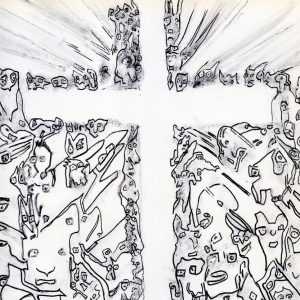Landscapes of Soul
“It the greatest error of our Society that many of the metaphysical assumptions of wiser ages than our own are presented as jokes to amuse children. The landscapes of poetry, the landscapes of great painters are not to be found in nature at all. It is false doctrine that sees them in terms of m
aterialism. They are landscapes of the soul, and the imagery is not an end but a means-a language for discoursing upon realities of the intelligible world, not the physical world. The theme of imaginative art is not physical but metaphysical. It is in the soul that their validity lies, not in nature. It is the poet and painter’s task to perfect a language of correspondences…The poetic secret is to find in nature the images that correspond to the already and forever existing landscape of the eternal world.”
—Kathleen Raine, ‘Poetry in Relation to Traditional Wisdom.’ (March, 1958)




